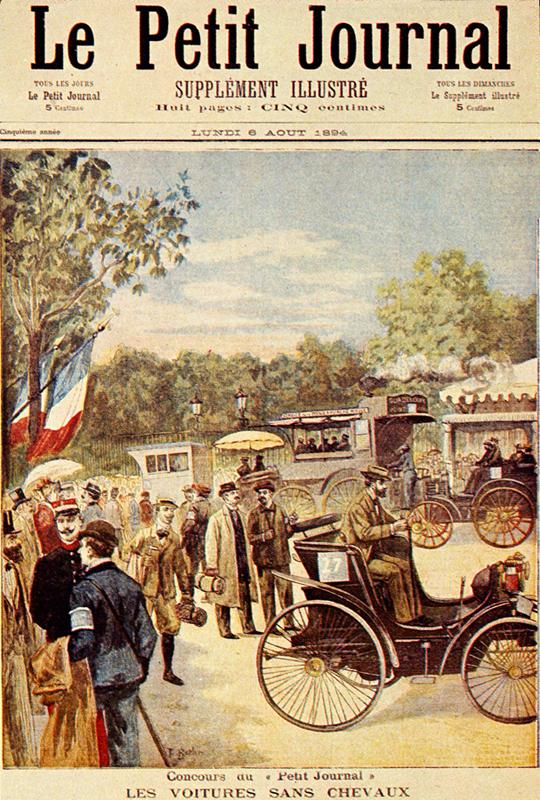On July 22, 1894, the landscape of transportation forever transformed as the world witnessed its first-ever automobile race, stretching from Paris to Rouen. This groundbreaking event attracted both competitors and spectators, eager to see how the nascent technology of motorized vehicles would perform. Organized by a Parisian newspaper to promote the development of cars, the race featured a diverse array of entrants, ranging from steam-powered contraptions to gasoline engines. As participants navigated the 126-kilometer route, the challenges they faced—ranging from mechanical failures to the unpaved roads—set the stage for an exhilarating display of innovation and competition. This inaugural race not only showcased the potential of automotive engineering but also ignited public interest in vehicles that would redefine mobility. Today, we explore the historical significance of this remarkable event and its enduring impact on the automotive industry.
The Pioneering Journey: Origins of the Paris to Rouen Automobile Race
The first-ever automobile race, which took place in July 1894, marked a significant milestone in the evolution of motor vehicles and automotive sports. Organized by the newspaper Le Petit Journal, the event sought to promote the burgeoning automotive industry in France, juxtaposing it against the traditional horse-drawn methods of transportation. Against the backdrop of Parisian streets and the picturesque French countryside, the race spurred public interest and technological advancements. Participants demonstrated a variety of vehicles, from steam-powered contraptions to early gasoline engines, highlighting the diverse innovations fueling this new mode of transportation.
Enthusiasts gathered to witness this unprecedented event, which featured over 30 competitors navigating a course stretching approximately 126 kilometers to Rouen. While the competition focused on speed, it also served as a platform for showcasing reliability, encouraging manufacturers to improve their designs. The race culminated in a dramatic yet celebratory atmosphere, with prizes awarded not only for speed but also for the best engineering. As a result, this historic race contributed to the establishment of automotive racing as a recognized sport and laid the groundwork for future competitions worldwide.
Technological Innovations: Milestones in Early Automobile Engineering
The inaugural automobile race from Paris to Rouen on July 22, 1894, marked a significant turning point in engineering innovation. This event was not merely a competition but a public demonstration of the practicality and potential of motorized vehicles. Enthusiasts and engineers alike gathered to witness as 13 entries completed the roughly 78-mile journey, showcasing their novel approaches to automotive design and functionality. The vehicles featured a variety of technologies, highlighting differing power sources, including steam and electricity, which set the stage for future developments in the industry.
The result of the race brought forth an array of notable milestones that would shape automobile engineering. Among the participants, Panhard et Levassor emerged victorious, illustrating the effectiveness of the front-engine, rear-wheel-drive layout that would become a standard in automotive design. This race catalyzed significant investments in research and development, driving teams of engineers to innovate in fields such as safety, speed, and efficiency. The excitement generated by the event encouraged the establishment of automotive clubs and further races, creating a foundation for the burgeoning car culture of the 20th century.
Cultural Impact: How the Race Shaped Public Perception of Motor Cars
The inaugural automobile race from Paris to Rouen in 1894 not only showcased the nascent automotive technology but also played a pivotal role in shaping public attitudes towards motor vehicles. This landmark event attracted a diverse audience, turning the race into a spectacle that captivated spectators across social strata. Crowds gathered to witness innovations in engineering, leading to an increasing acceptance of motorized transport. The race served as a demonstration of how automobiles could challenge traditional modes of transport, particularly the horse-drawn carriage, thus shifting public perception toward a more favorable view of the automobile as a viable alternative.
As the race unfolded, it became clear that the benefits of mechanized travel extended beyond speed and efficiency; they ushered in a new era of personal mobility. The media coverage highlighted a series of key influences on public perception, including:
- Innovation: The event spotlighted cutting-edge technology and engineering prowess.
- Accessibility: The practical utility of cars became evident, showcasing their potential for everyday use.
- Social Change: The race symbolized a move towards modernity and progress, appealing to a society in flux.
| Aspect | Impact on Perception |
|---|---|
| Speed | Revolutionary change in travel |
| Innovation | Confidence in engineering advancements |
| Accessibility | Motor cars as personal transport |
| Social Change | Symbol of progress and modernization |
Lessons Learned: Recommendations for Future Celebrations of Automotive Heritage
The inaugural automobile race from Paris to Rouen marked a pivotal moment in automotive history, highlighting the need for future celebrations to honor this legacy effectively. Engaging the community should be a priority, with local enthusiasts, and history buffs participating actively. Hands-on experiences such as classic car exhibits, educational workshops, and restoration demonstrations can deepen appreciation for automotive heritage. Including diverse panels of experts can provide varied insights into the evolution of engineering and design, fostering a richer dialogue around the industry’s past and future.
Moreover, emphasizing sustainability can align modern celebrations with current environmental consciousness. Future events could incorporate eco-friendly practices, from electric vehicle showcases to recycling initiatives. To further immerse attendees, consider the use of augmented reality technology to give visitors a glimpse into historical milestones. Finally, establishing annual gatherings or local chapters could sustain momentum, ensuring that the appreciation for automotive history does not fade. Such strategies will promote lasting connections within the community and support the ongoing narrative of innovation and heritage in the automotive world.
Wrapping Up
As we reflect on the historic first-ever automobile race from Paris to Rouen, it’s clear that this event marked a pivotal moment in transportation history. With a blend of innovation and competition, the race not only showcased the capabilities of early motor vehicles but also ignited public interest in automotive travel. The journey, which spanned approximately 78 miles, highlighted the potential for the automobile to revolutionize how we traverse distances. As we continue to witness remarkable advancements in automotive technology, it’s essential to look back at milestones like the Paris to Rouen race that set the stage for the modern era of mobility. This event serves as a reminder of the enduring human spirit of exploration and the relentless pursuit of progress.




